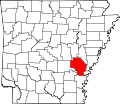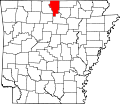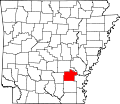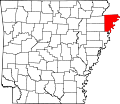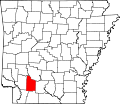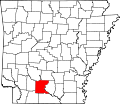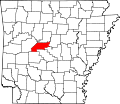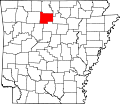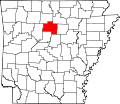| Counties of Arkansas | |
|---|---|
| Location | State of Arkansas |
| Number | 75 |
| Populations | 4,690 (Calhoun) – 401,209 (Pulaski) |
| Areas | 526 square miles (1,360 km2) (Lafayette) – 1,039 square miles (2,690 km2) (Union) |
| Government | |
| Subdivisions |
|
| Part of a series on |
| Regions of Arkansas |
|---|
 |
There are 75 counties in the U.S. state of Arkansas. [1] Arkansas is tied with Mississippi for the most counties with two county seats, at 10.
